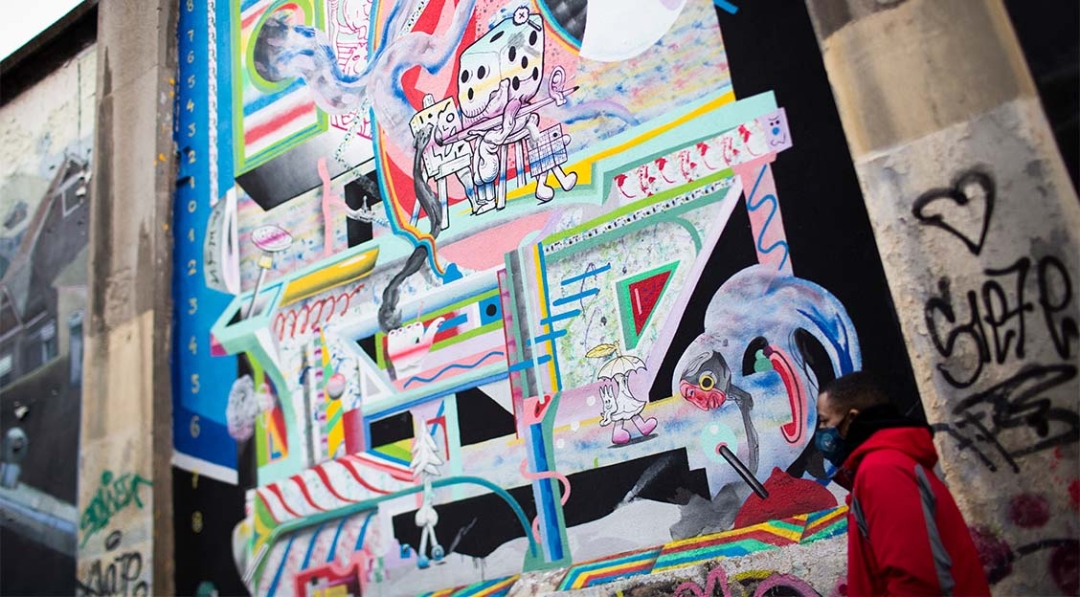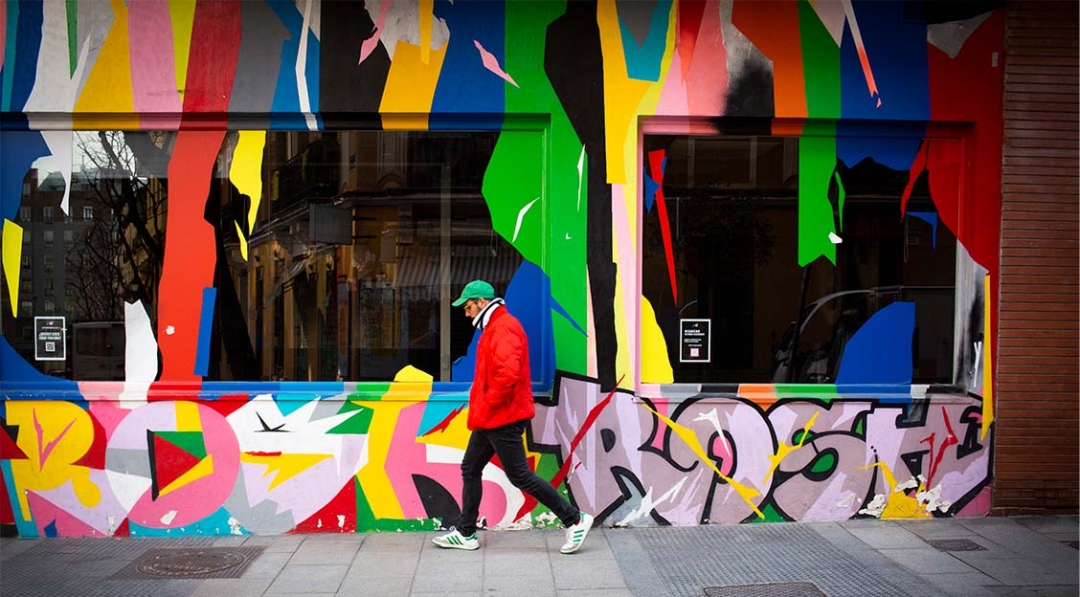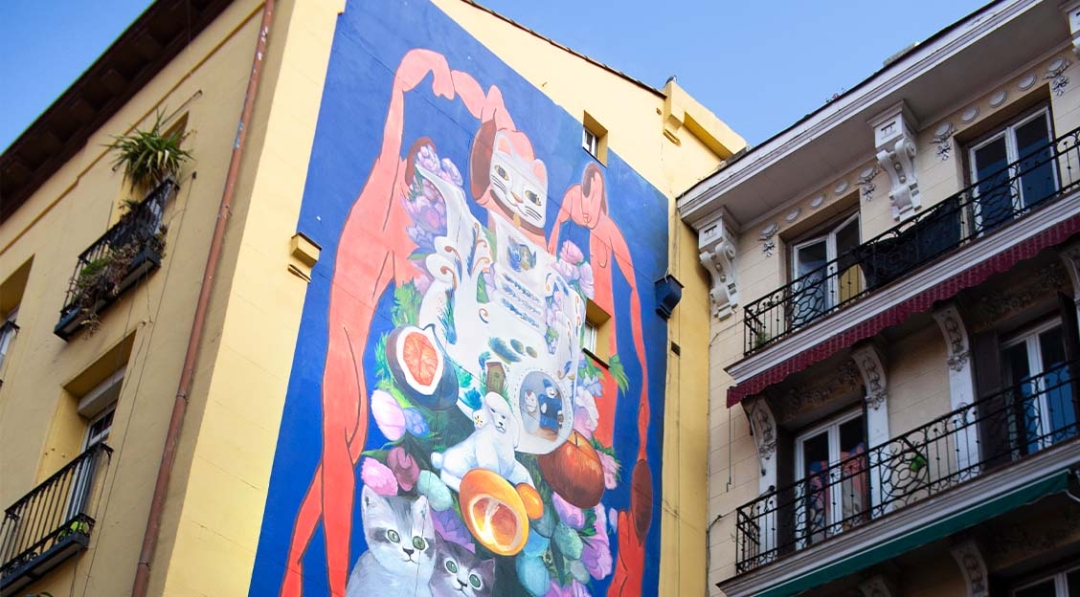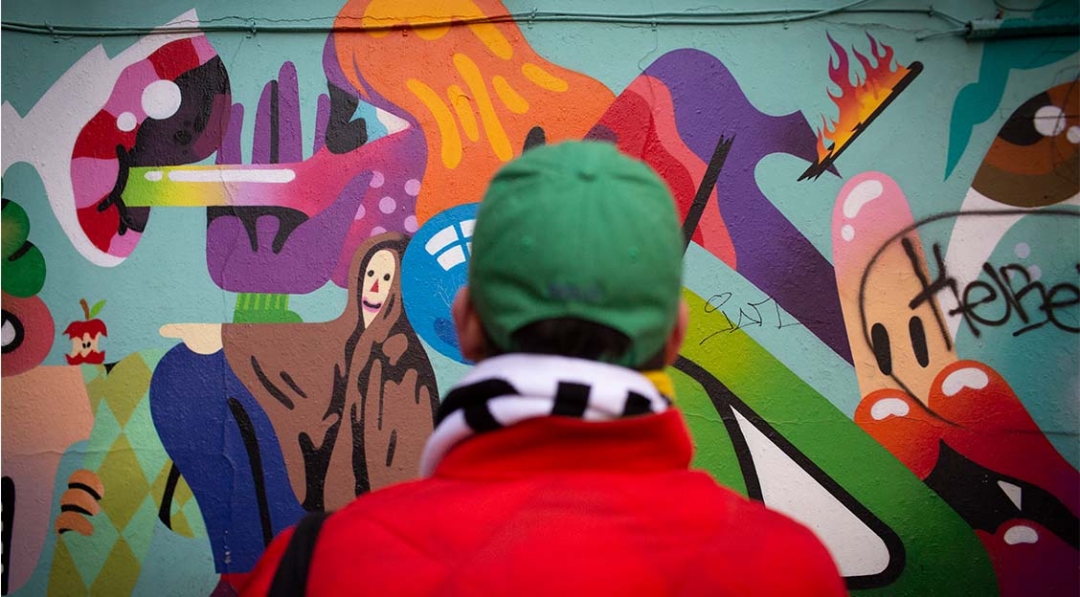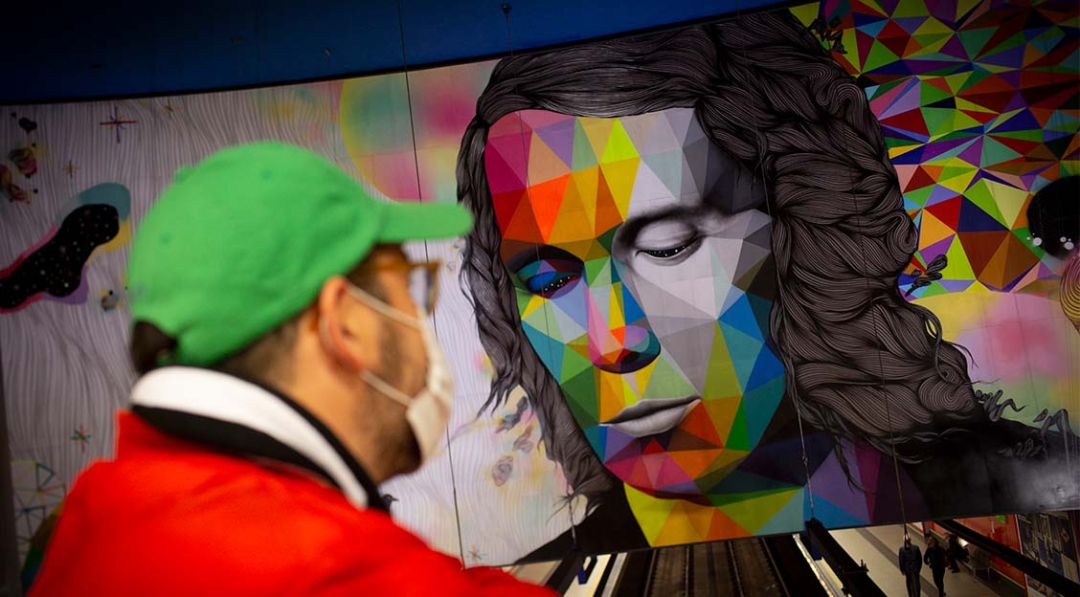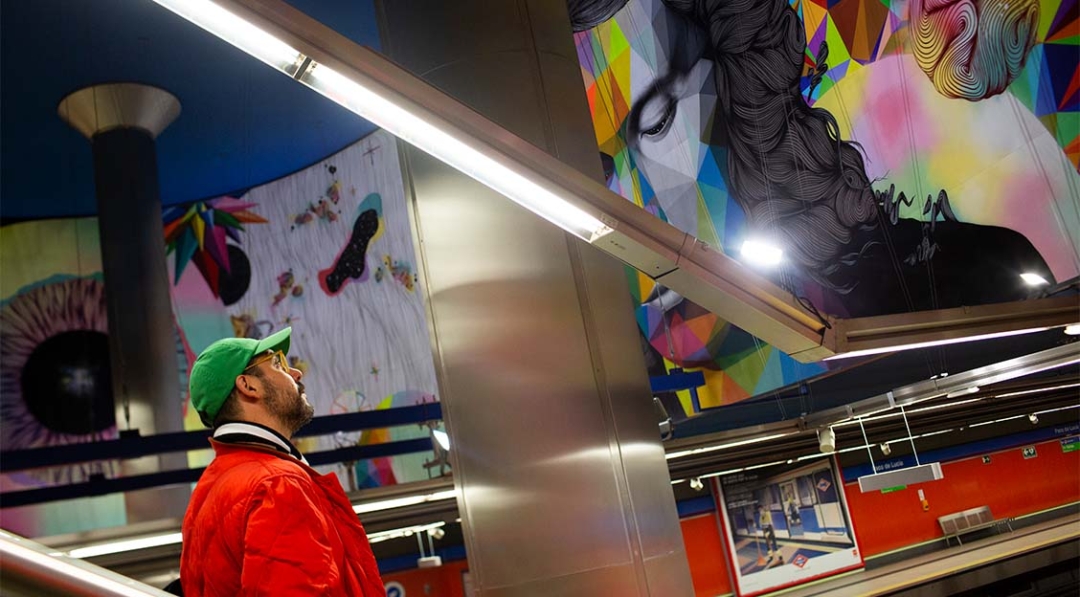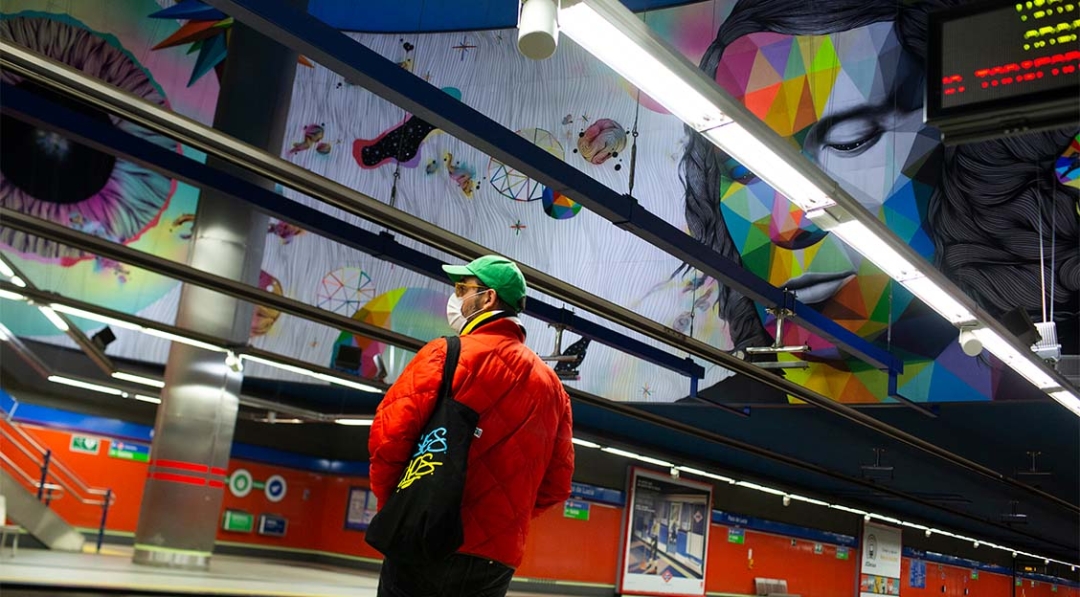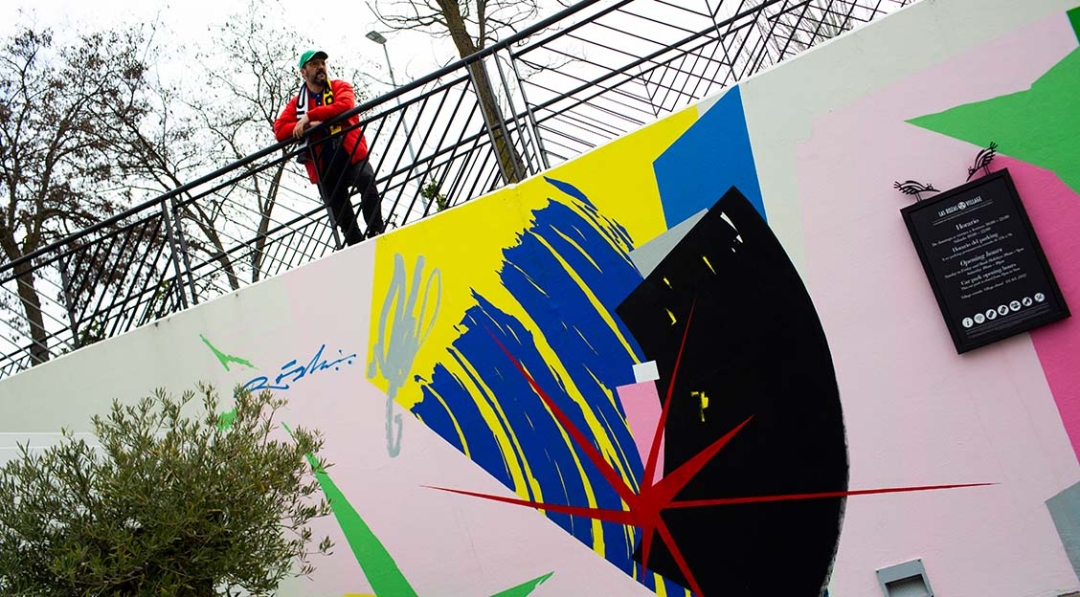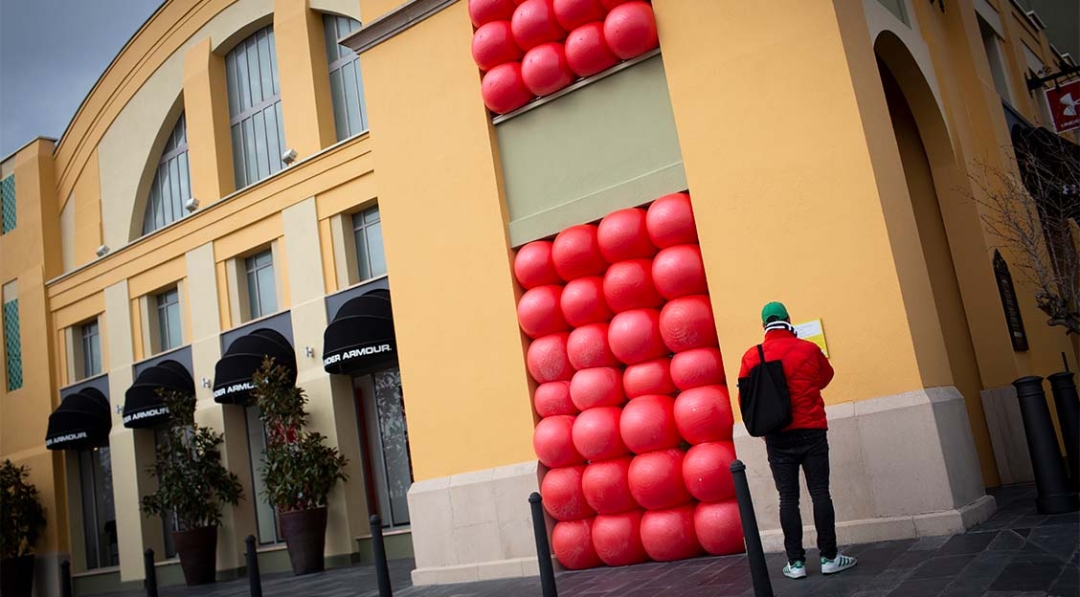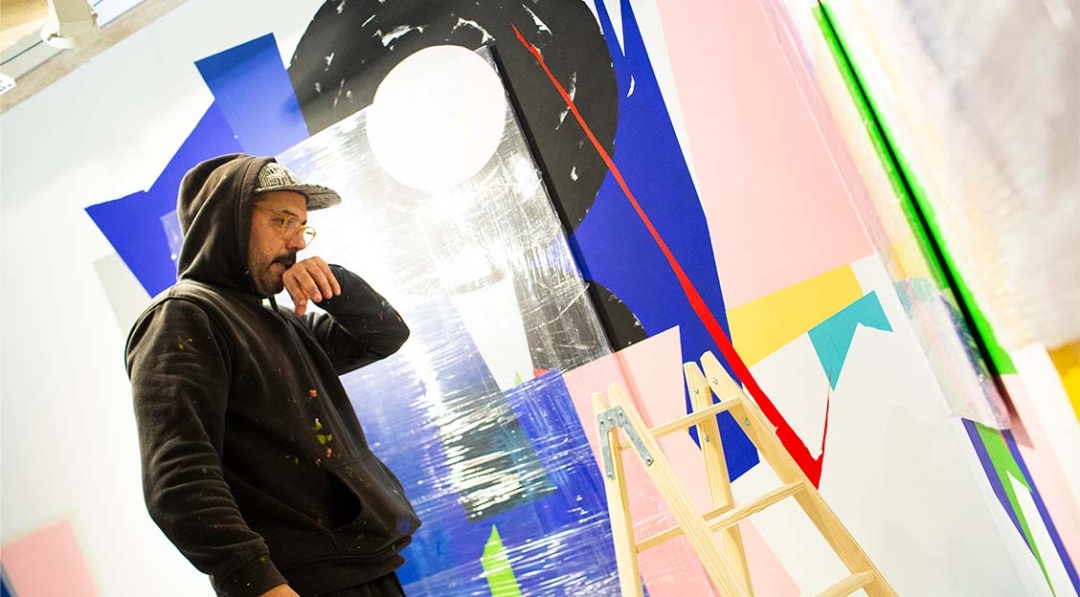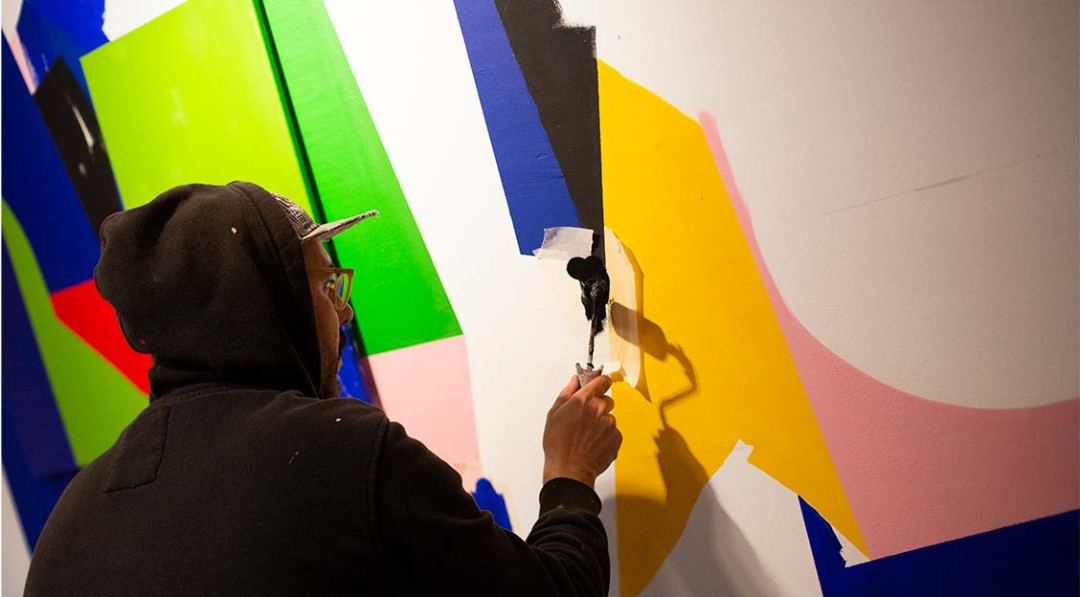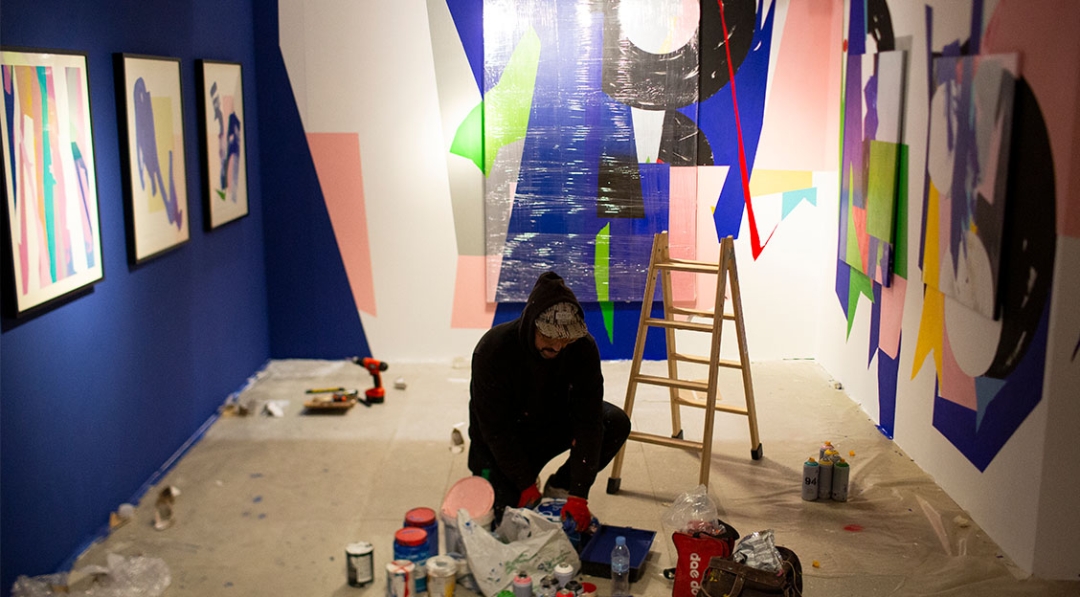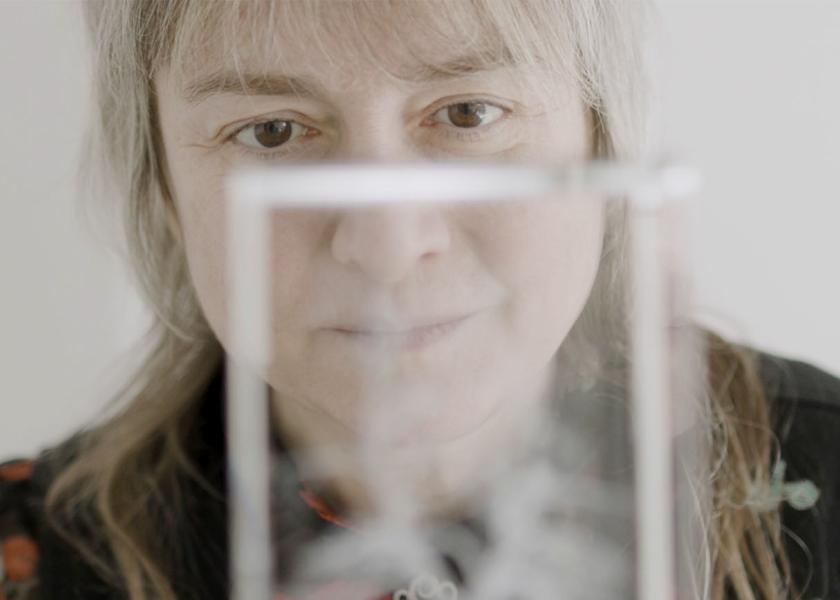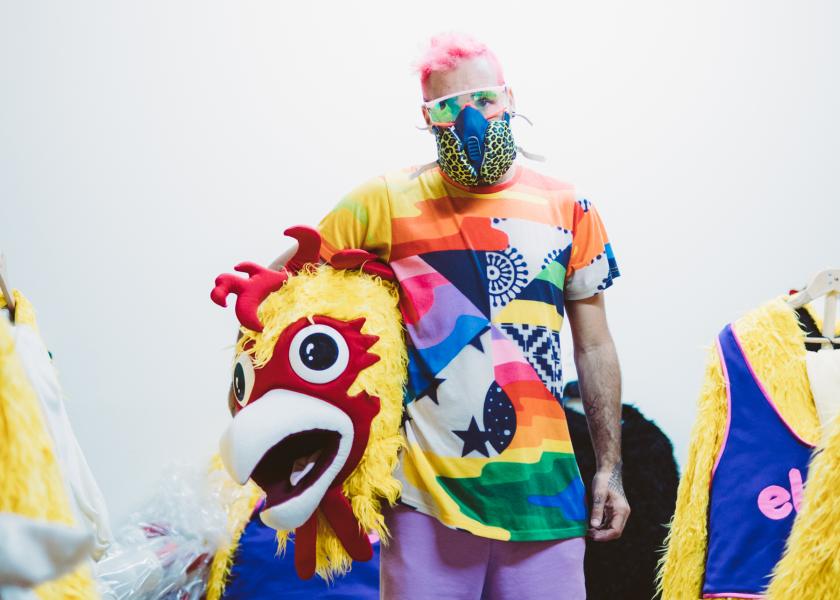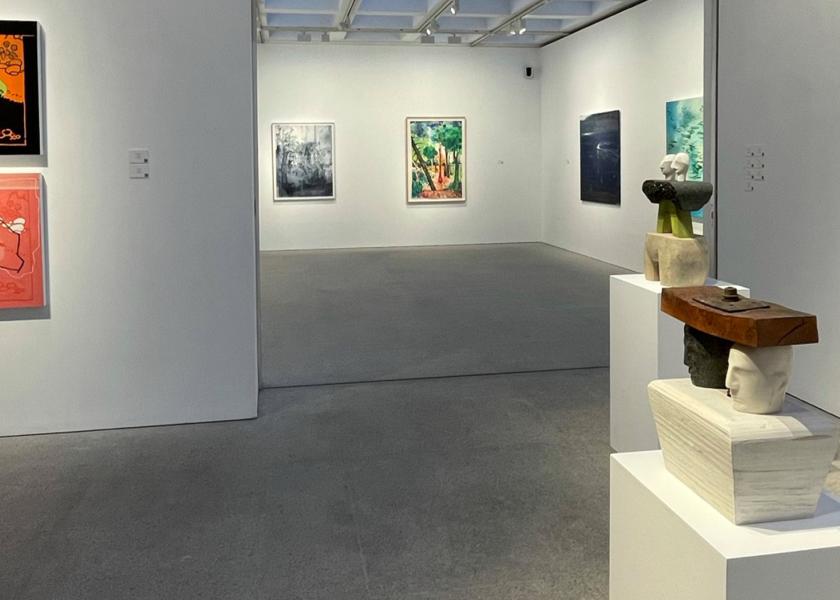Rosh:.
At street level
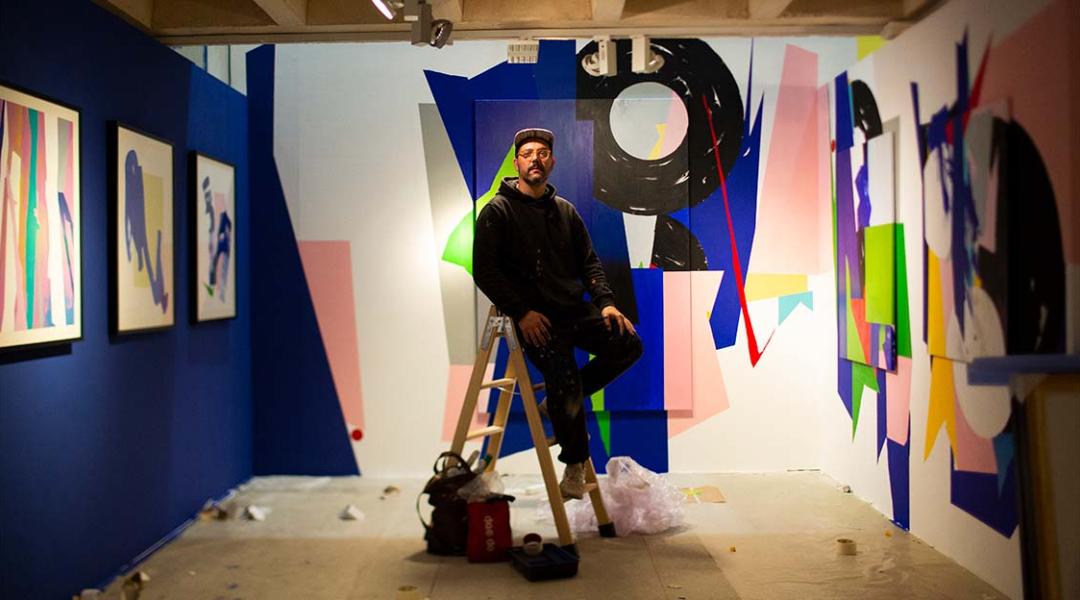
Rosh:. considers himself simply an artist and warns: “Urban [artist] is a label I don’t feel 100% comfortable with.” Nevertheless, there are few better people to talk about “an artistic movement [urban art] that’s influencing contemporary society on all levels” with than this native of Elche who has settled in Madrid and is our guide to the city for the day.
Glorieta de Embajadores, on the corner with Miguel Servet, 10.30 a.m. Rosh:. —also known as Rosh 333 or RLove—, appears on time in a green cap, amber-rimmed glasses, a white scarf, a red coat, black jeans, and white-and-green trainers, matching his cap and scarf. This doesn’t seem a coincidence, behind is a colourful aesthetic that links to the works of this urban artist. And this art will be precisely the topic of conversation for the rest of the morning.
There’s rain forecast, but the sky over Madrid indulges us, and lets us start this route through the capital’s urban art with hopes of seeing the sun. Our first stop is the Muros de Tabacalera, a space dedicated to this art that everyone can enjoy. Rosh:. tells us that they should be updated soon because the last edition was in 2019. “Urban art is more accessible because the audience doesn’t need to look for it in a museum or art gallery, they find it walking along the street.” Here he identifies the works of Pelucas and Srger.
“Urban art is more accessible because the audience doesn’t need to look for it, they find it walking along the street”
Next, we walk towards calle Doctor Fourquet, where Rosh:. has one of his murals. This piece was vandalised by graffiti not long after it was painted and had to be redone. For Raúl, Rosh:.’s birth name, urban art has many aspects, which go beyond graffiti. “What encompasses everything is that they are interventions within the public space, and graffiti is one of them. Many noteworthy artists come from that circle, myself included.”
But how is an urban artist born? In Rosh:.’s case, colouring pencils came before spray cans. “Illustration is something that’s always been in my life. My mother used to buy me a comic every week and I’d make up my own characters. I discovered graffiti at the beginning of the 1990s and, from there, I started making murals and other kinds of interventions.” His style has evolved naturally, he admits so himself, but he considers that he has maintained a unique and recognisable voice, although he’s against labels because they’re a way of limiting yourself.
We wander around Lavapiés, a neighbourhood that has become the home of dozens of works of urban art, some of which Rosh:. wants to show us. After a pitstop on calle del Amparo, where we look at a piece by Eversiempre, we carry on walking towards Cascorro. “The situation of urban art has improved, but there’s still a long way to go, both for the public and private institutions, and the artists.” There, he points to another piece, this one by Nano4814.
Between two worlds
Taxi! We take one towards Rosh:.’s most well-known piece, the mural he made with Okuda for the Paco de Lucía Metro Station. Its title, Entre dos universos [Between two worlds], is an obvious reference to the greatest work of this guitarist from Algeciras. It’s not the only assignment he’s received, although he still creates on the side-lines. “Extremely interesting things happen there. In fact, most artistic movements that are now widely accepted were ground-breaking and went against the tide at the beginning.”
Rosh:. remembers when they received the assignment, completely unexpectedly, and how he and Okuda, who shared a studio, started working on it. A tremendous challenge, due to its significance and size. Before getting there, he shakingly confesses that he hasn’t set foot in the station since the opening day. Anyone would think that facing his own work makes a strong impression on him, but this feeling disappears as soon as he stands in front of it. More calmly, he murmurs to himself: “We did a decent job.”
“Talent is usually associated to an innate skill, but you can only develop it fully through continuous work”
The left side was worked on by Rosh:., and the right side, by Okuda. In the centre, the portrait of Paco de Lucía brings together both universes —and talents—. Without a doubt, there’s plenty of talent behind this piece, which causes sincere admiration. “Talent is usually associated to an innate skill, to having a knack for any kind of creative activity; but you can only develop it fully through continuous work.”
From the street to the galleries
Back inside a taxi, now on our way to Las Rozas Village, we talk to Rosh:. about the artist’s life. “Yes, I can say that I live by my art. I paint commissioned murals in private spaces, I collaborate with brands, I sell studio pieces, I put together exhibitions.” In fact, we’re invited to attend the exhibit that’ll open at the beginning of June at GARNÄ Gallery, an emerging art gallery in Madrid.
The arrival of urban art to art galleries isn’t a new phenomenon, Rosh:. highlights artists such as Harring and Basquiat, who made themselves known by making interventions in the public space. Does this involve certain domestication? “It depends on the artist and the concessions they’re willing to make. For example: if an artist enters the gallery circuit and stops creating independently in the public space.” Personally, he admits that he hasn’t quit working on the street.
“For outdoor works, the context is 50% of the piece, that is, the base or space where I’ll make it”
Within the framework of Urvanity Art 2022, Rosh:. painted a mural on the car park access ramp of Las Rozas Village. He used the wall, bins and even plant pots to express his art. How do you face a job like this? “Outdoors, the context is 50% of the piece, that is, the base or space where I’ll make it. From there I start to develop it.” A few days earlier, specifically at the COAM headquarters and also within Urvanity Art, we photographed him working.
Making the most of our time there, Rosh:. beckons us towards the work of Ampparito. Friends and colleagues constantly inspire him. In this sense, he mentions Srger, Roice183, Nano4814, Momo, Demsky, Daniel Muñoz, or Felipe Pantone. And adds: “When it comes to general art, I’m extremely interested in Equipo 57, Richard Mortensen, Gordon Matta-Clark, Katharina Grosse, Esther Ferrer, Pello Irazu, Jorge Oteiza, or Bernard Piffaretti”.
Rosh:. has his routines and every morning he goes to his studio in the neighbourhood of Carabanchel. There, the music of Brian Eno, John Zorn, Nick Drake, Kraftwerk, or Pink Floyd keep him company. And when it’s not music, it’s films —“Blade Runner, Taxi Driver, The Godfather or The Shining are films I rewatch every so often”— or literature —One Hundred Years of Solitude by Gabriel García Márquez, or The Rats by Miguel Delibes had an impression on me”—. Like this, talking about other arts and back in the centre of Madrid under the midday sun, we say goodbye to Raúl. Thanks for the ride!
